A 600-Mile Run Through the Mountains
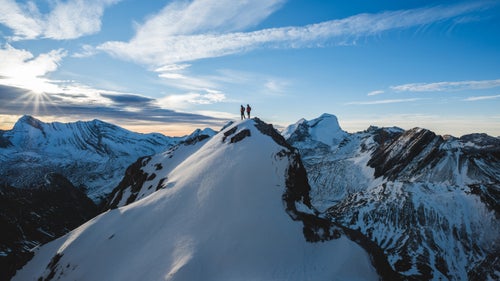
This fall, world-renowned ultrarunners and partnered with photographer to run across some of the highest, wildest mountain ranges in the Lower 48, with as little gear as they could get away with. The trio left Missoula, Montana, on September 16, traveled roughly 600 miles through the northern Rocky Mountains—hoofing between 35 and 40 miles a day—and arrived in Banff, Canada, 600 miles and 24 days later. It’s called the Crown of the Continent Traverse.
Why did they do it? “We like to suffer, and to challenge ourselves physically. In the end, that’s reason enough,” says Foote.
As their backyard playground, traversing these mountains was a long-held dream for the two men, who live in Missoula and train together. The expedition finally became a reality when the ultrarunners met Gnam at the debut of his photography book, . One year later, the trio set out.
Photo: “As a photographer I wanted to show what the trip looked and felt like, which meant I had to be part of it and not just a spectator,” says Gnam, who trained hard for the trip. But a 20-mile road section during a 50-mile day left him with debilitating shin splints that forced him to sit out the middle of the expedition. Although he was disappointed, the unplanned rest days allowed him to capture aerials from a helicopter. (He took this shot, of Wolfe and Foote atop Mount Northover in Alberta’s Kananaskis Country, from the ground.)
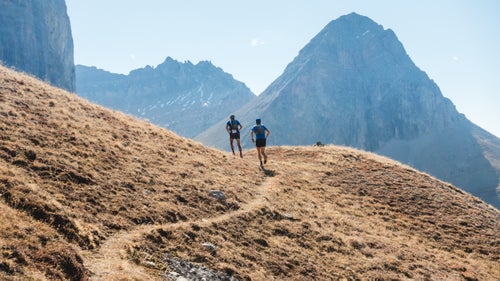
“The Mikes,” as they’re known in the running world, have podiumed at the biggest ultramarathon races in the world. Foote, 32, and Wolfe, 37, are also best friends. After a year of planning, they ran out their front doors in Missoula (dropping Wolfe’s toddler off at daycare on the way), and hit the Rattlesnake Wilderness trailhead. On October 9, they arrived in Banff, jogging a few quick laps through town to reach the 600-mile mark.

A Sprinter Van manned by Flathead Valley native David Steele served as the expedition’s sole support crew. Steele met the runners as often as he could, but limited road and trailhead along the Crown meant they often had to carry heavy overnight packs. The runners’ longest self-supported stretch was four days, and their shortest stretch was 11 hours.
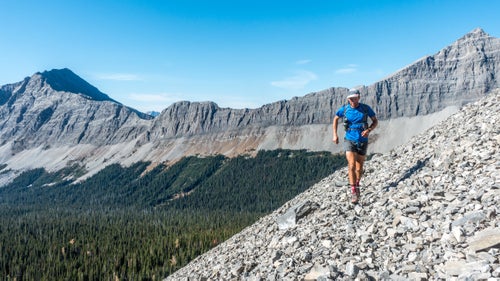
The Mikes both struggled with pain throughout the expedition, since neither were accustomed to running with fully-loaded packs. “I’ve never had knee problems before, but our knees got really beat up this trip. A couple nights in a row, I could barely sleep with the throbbing,” says Foote.
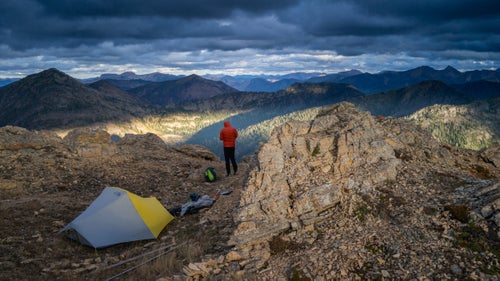
Squeezing three guys into a one-and-a-half-man tent wasn’t the most enjoyable part of the journey. But it sure helped them stay warm during whiteouts on ridges, a common autumn scene in the Northern Rockies. During dry nights—like this one on Montana’s Swan Crest—the runners spread out to sleep alone.
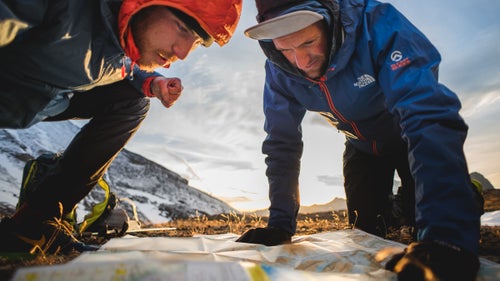
“I think this was our most common pose, other than running,” jokes Foote. “We knew which mountain ranges we wanted to traverse, and that we wanted to end up in Banff. The rest was left up to weather.” Constantly changing course to find the best route meant that the runners had to be extra-prepared with maps, guide books, and trail options—and willing to talk calmly through orienteering hurdles as they went.
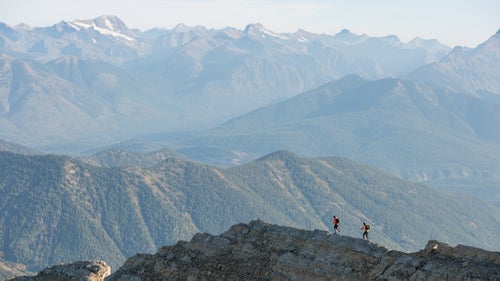
Most of the time, the best and fastest route meant staying high. Cruising along this ridgeline in the Great Bear Wilderness just south of Glacier National Park was the highlight of Day 8, which “turned heinous” when the runners had to descend steep, loose talus and bushwhack through thick timber to make camp.
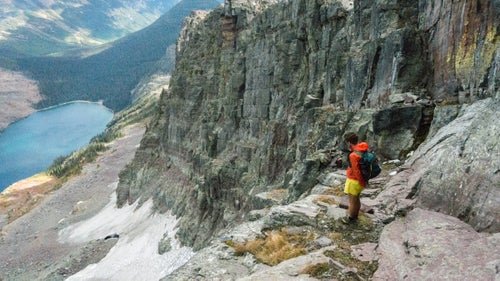
Mike Foote gazes down at Sunburst Lake, nestled in the craggy Swan Mountains. The Mikes had to down-climb a fifth-class face, and then stem between a glacier and its bergschrund to get through this section. “We were definitely at our limit at times,” Foote says. “But that’s why we did it.”
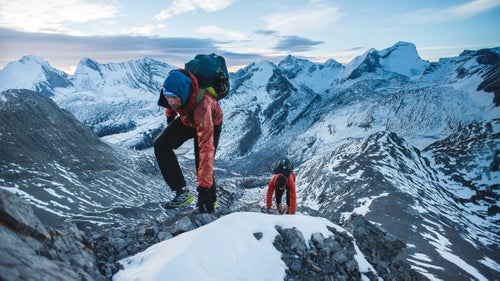
Weather could have easily cut the trip short, since it’s risky to traverse alpine country in the Northern Rockies in the fall. Several summer scheduling conflicts required the expedition to start later than they would have liked. Although the runners hit snow as early as day one from Missoula and camped in snow most nights toward the end, they never encountered enough to shut them down.
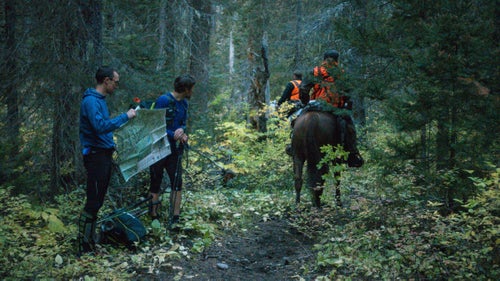
On Day 5, the trio ran into two elk hunters in the lowlands after getting bumped off a too-snowy ridge in the Bob Marshall Wilderness. The two groups camped on the same lake, a few hundred yards apart. “We woke up in the middle of the night to the sound of a gunshot, and one of the hunters screaming, ‘Get outta here, bear!’” says Foote. “That kept us awake, waiting for the bear to come crashing through our camp.” It never did.